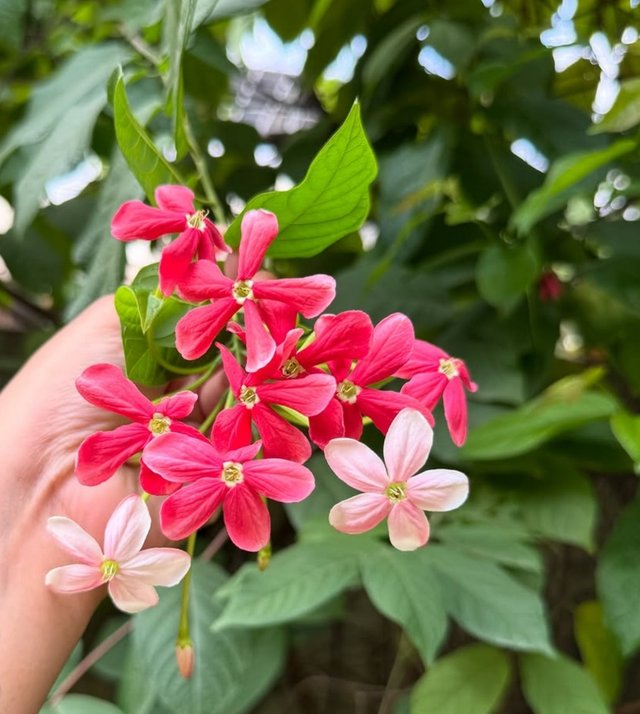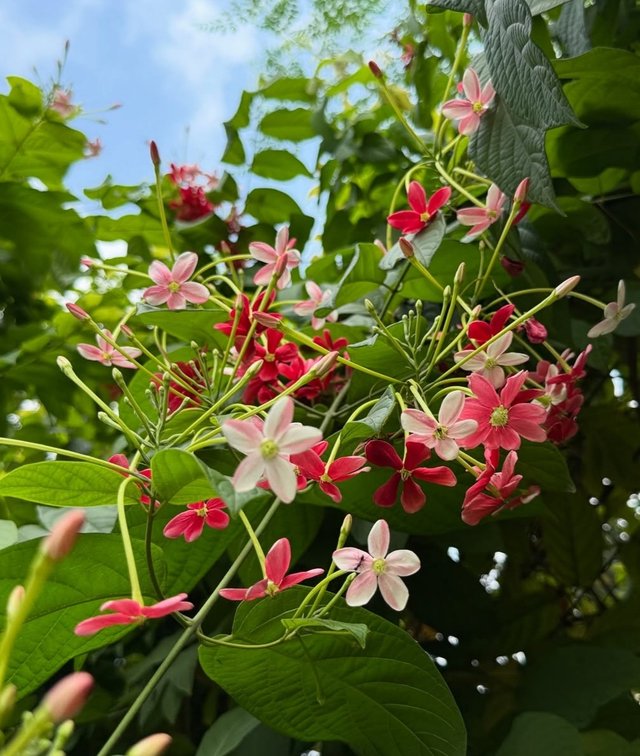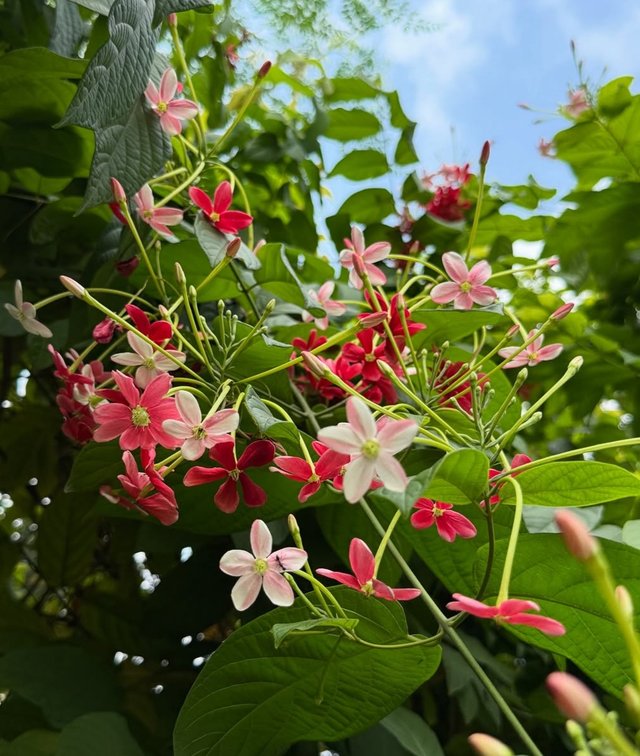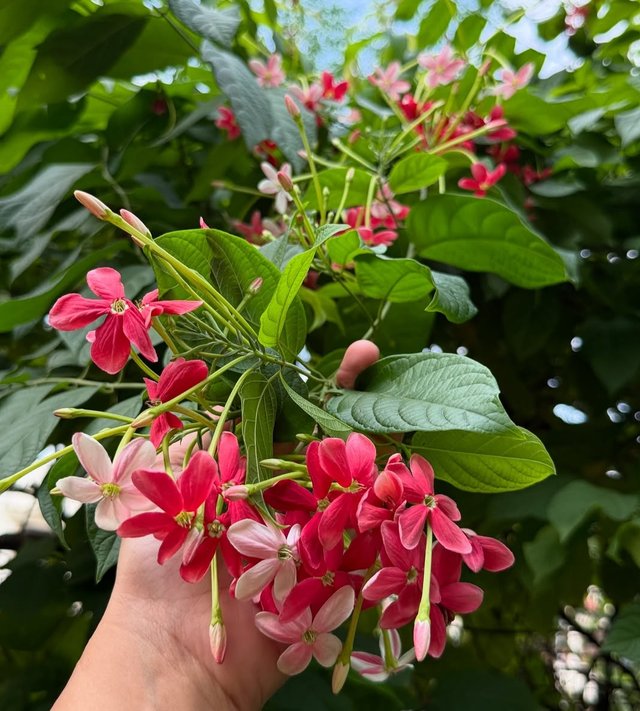Combretum Indicum Flower
Combretum indicum: A Beautiful and Fragrant Tropical Vine
Combretum indicum, commonly known as Rangoon Creeper, Chinese Honeysuckle, or Quisqualis indica, is a stunning tropical vine admired for its vibrant, color-changing flowers and intoxicating fragrance. Native to tropical Asia, particularly India, Myanmar, and Malaysia, this fast-growing plant has become a favorite ornamental climber in gardens worldwide. Its charm lies not only in its beauty but also in its versatility and low-maintenance nature, making it a delightful addition to landscapes, patios, and trellises.
Botanical Profile
Scientific name: Combretum indicum
Family: Combretaceae
Common names: Rangoon Creeper, Chinese Honeysuckle, Burma Creeper
Type: Perennial, woody climber
Native range: Tropical Asia
Height and spread: Can grow up to 8–10 m in ideal conditions
Flowers: Star-shaped, fragrant, and color-changing
Leaves: Simple, ovate, bright green, and glossy
Striking Flowers and Color Transition
One of the most captivating features of Combretum indicum is its dramatic floral display. The blooms start off white on the first day, turn pink by the second day, and deepen to a vivid red by the third day. This natural progression is not only visually stunning but also serves an ecological purpose—different pollinators are attracted at different stages. For example:
White blooms: Draw moths and nocturnal insects.
Pink blooms: Attract bees and butterflies.
Red blooms: Appeal to birds like sunbirds and hummingbirds.
The star-shaped flowers grow in clusters, filling the air with a sweet, fruity fragrance, especially in the evenings.
Growth and Care Requirements
Combretum indicum is valued for its hardiness and adaptability. Here’s how to grow it successfully:
Light:Thrives in full sun to partial shade.
Full sunlight encourages abundant flowering.
Soil:Prefers well-draining soil rich in organic matter.
Tolerates slightly acidic to neutral soil conditions.
Watering:Water regularly during the growing season to keep the soil moist but not waterlogged.
Once established, it becomes moderately drought-tolerant.




